Although this exercise took a considerable amount of time I found it very enjoyable as it forced me to look at all the subjects in a different way. Previously, turning the camera round was only really something I thought about if I was taking a picture of something tall. Whilst tall subjects often benefit from a portrait rather than landscape framing, this exercise has taught me that this is not necessarily always the case. All the images can be viewed in this Flickr set.
This image is of Shad Thames in London. The portrait shot emphasises the height of the buildings. The bridges between the old warehouses give interest to the picture where there would normally be nothing. The landscape image emphasis the bridges linking the warehouses together. The landscape image also give more of a sense of depth. Personally I prefer the portrait image. I decided to remove the colour from the image as the sky was white and black & white gives a more historical feeling.
I took these photos of Tower Bridge from the east side of the south bank. I was surprised at the results, as although the views are essentially the same, the landscape makes the span look much longer and the portrait photos makes the tower look higher.
These photos are of the 'Shard' building in the London Bridge area. Not surprisingly, the portrait image emphasises the height of the structure being constructed.
This is the Millennium Bridge looking towards St Paul's Cathedral. The portrait images doesn't really work for me, whereas the landscape one does as it gives good lines towards the vanishing point. Obviously a nicer sky would have made a big difference to the vibrancy of the photos!
St Paul's Cathedral from Peter's Hill shows the iconic building in it's modern surroundings. The portrait image makes the subject appear to be squashed into it's surroundings, whereas (surprisingly to me) the landscape photos makes it feel less crowded, even though there are more of the modern buildings in view.
The National Police Memorial is a simple monument which is a stack of glass rectangles. The portrait image is fairly stark, whereas the landscape give context to the memorial surroundings - the somewhat bleak and 'cold war like' side to the Admiralty buildings
These simple photographs of a dart and dart board give very different views of the tightly cropped dart. I was very surprised at just how different these came out, especially that much more of the dart board is visible in the portrait image. The flash was held off camera and to the right, slightly above centre for the portrait and slightly below centre for the landscape. This, I felt, gave some additioanl interest to the images and worked better in the landscape version.
This is the Shard building under construction seen from the grounds around Southwark Cathedral. the landscape image gives a nice contrast between old & new, although the image has become distorted from the use of a very wide lens.
The two sets of images above are both of the memorial at the abandoned WWII airfield at Bradwell On Sea. The first images were taken with a long lens to make the old Power Station in the background appear closer to the monument. Of the four images, I prefer the portrait image of the memorial from straight ahead. The lines of the paving draw the eye towards the subject and the large amount of sky ties the scene into the subject well.
The images above are of ancient decaying Ash trees in a place know as Ash Avenue near Wilcote in Oxfordshire. I feel that in both case, the landscape images work best as they give the viewer more information relating to the surroundings of the subjects.
These images are of a root of ivy growing up a tree. The landscape image doesn't really work that well for me, but the portrait one exaggerates the height of the tree well
These photographs of a woodland trail were taken as they have high objects (the trees) and a long flat subject (the path). The landscape images seems to flatten the path whilst the portrait stretches it and it appears much longer.
The images above are of the approach to the Imperial War Museum in London. The portrait photograph lends itself well to the overall image as it elongates the path towards the imposing naval guns in front of the monumental like building. Interestingly, the guns themselves are not parallel with the path, which detracts from an otherwise symmetric view. Additionally, the small hedge bordering the path works better as it frames the path and fills the bottom of the frame. This really helps draw the viewer into the scene.
These photographs are of the roof of the exhibition hall at the Imperial War Museum. Although both photographs were taken from exactly the same spot, the images looks quite different. The Landscape image gives the illusion of the lattice being wider than in the portrait version, but closer inspection reveals them to be the same. The landscape version emphasises the span, whereas the portrait image give a more 'tunnelled' feeling.
I was surprised what a big difference turning the camera round could have on fairly normal images and will be taking portrait and landscape images much more frequently now.

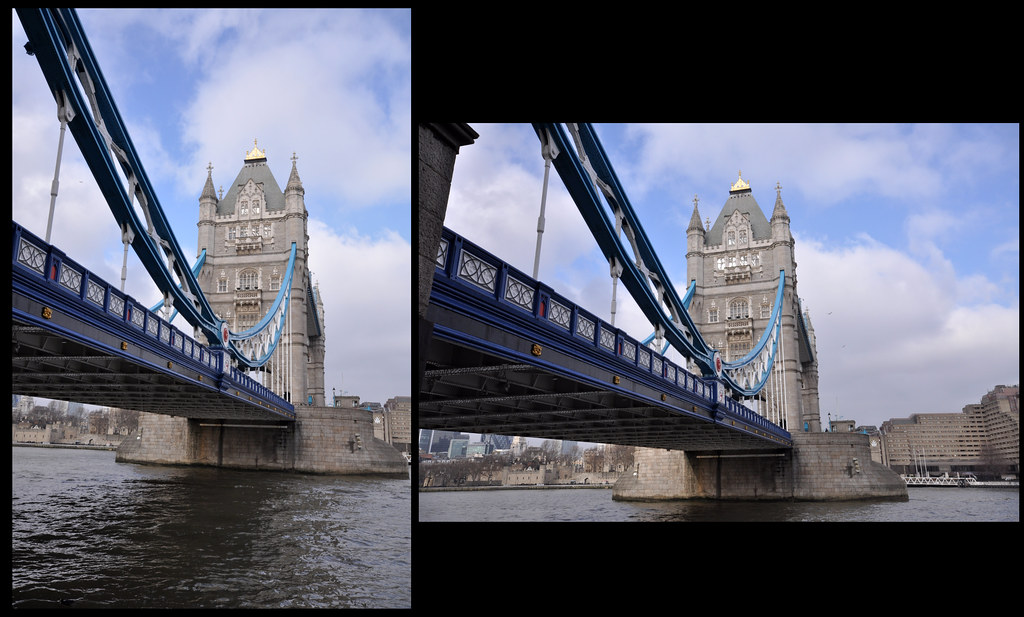
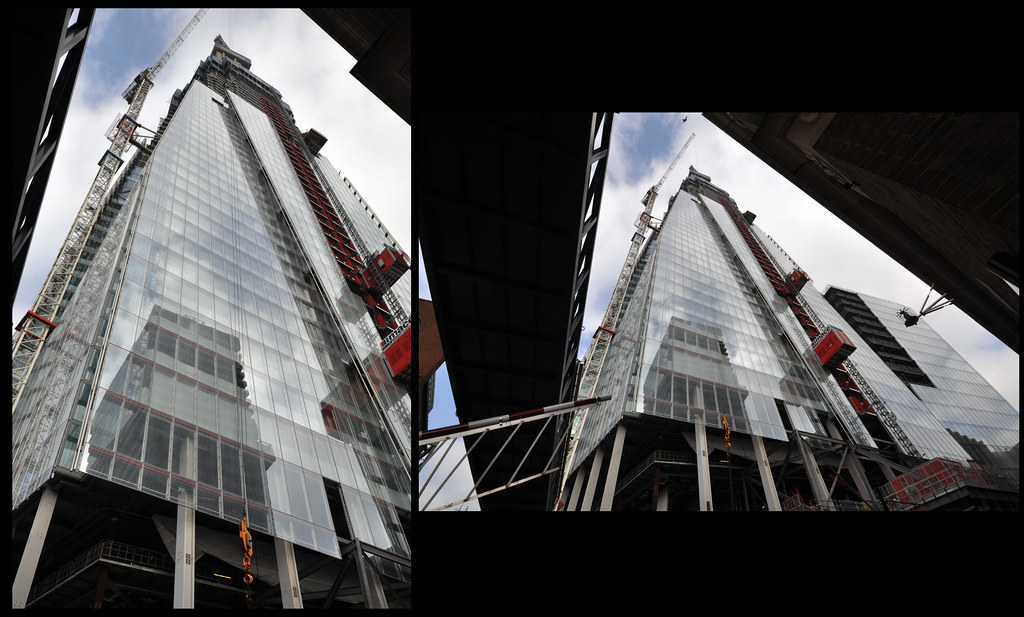


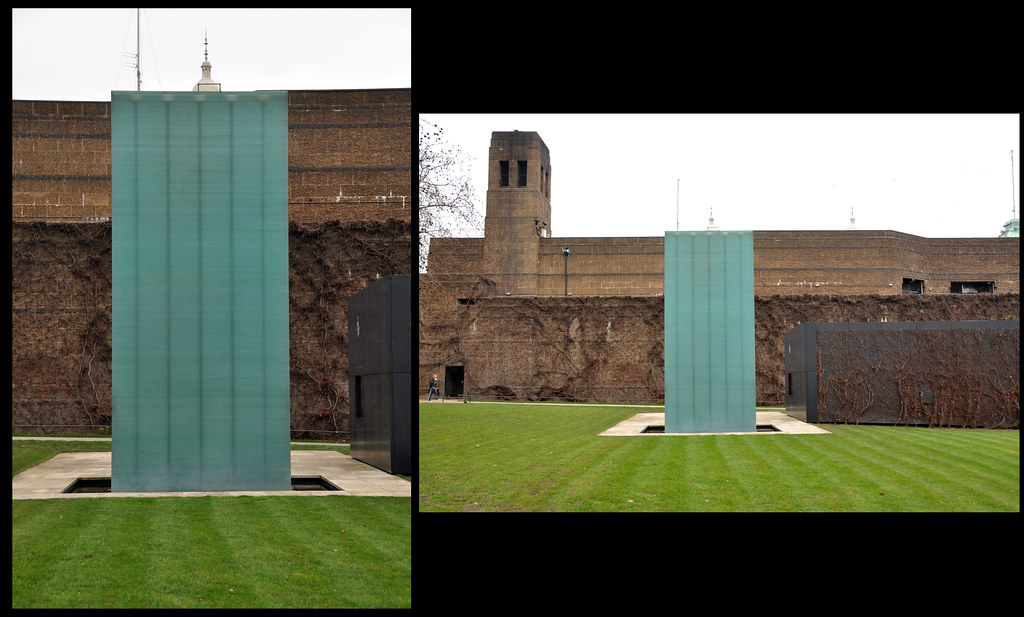
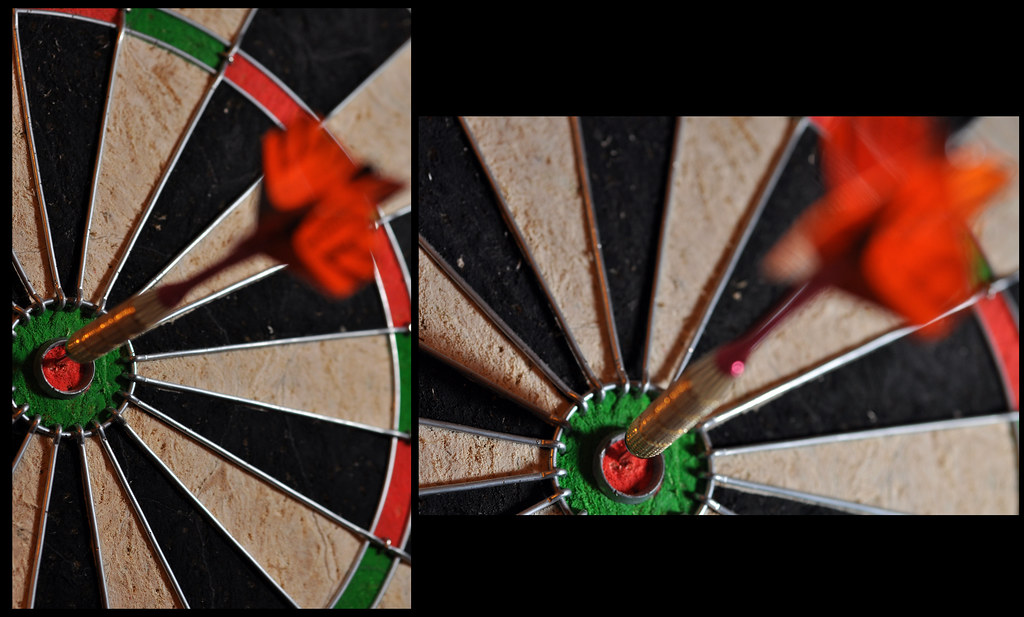
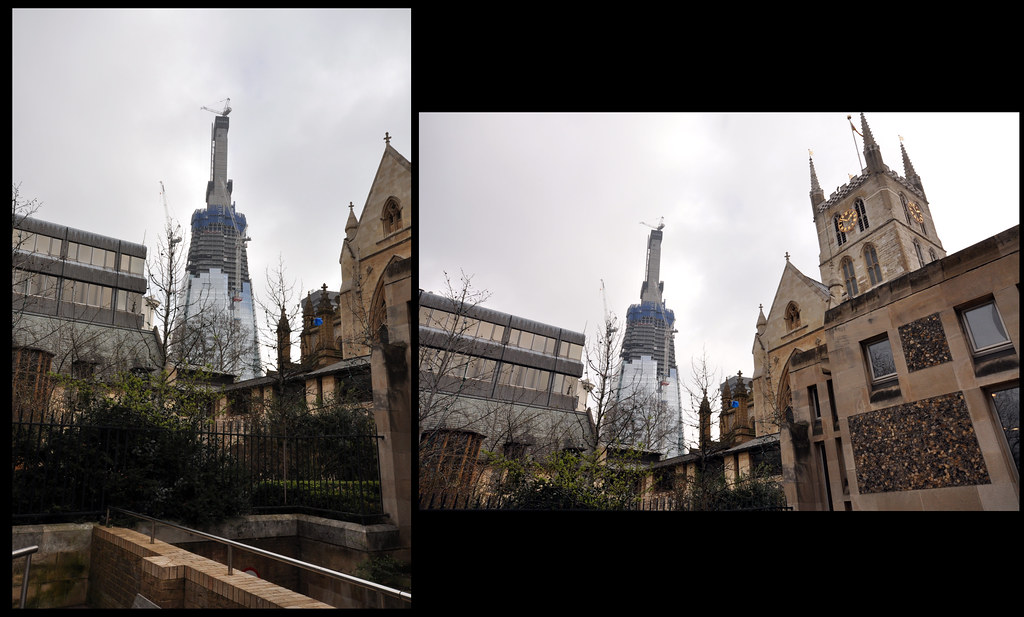
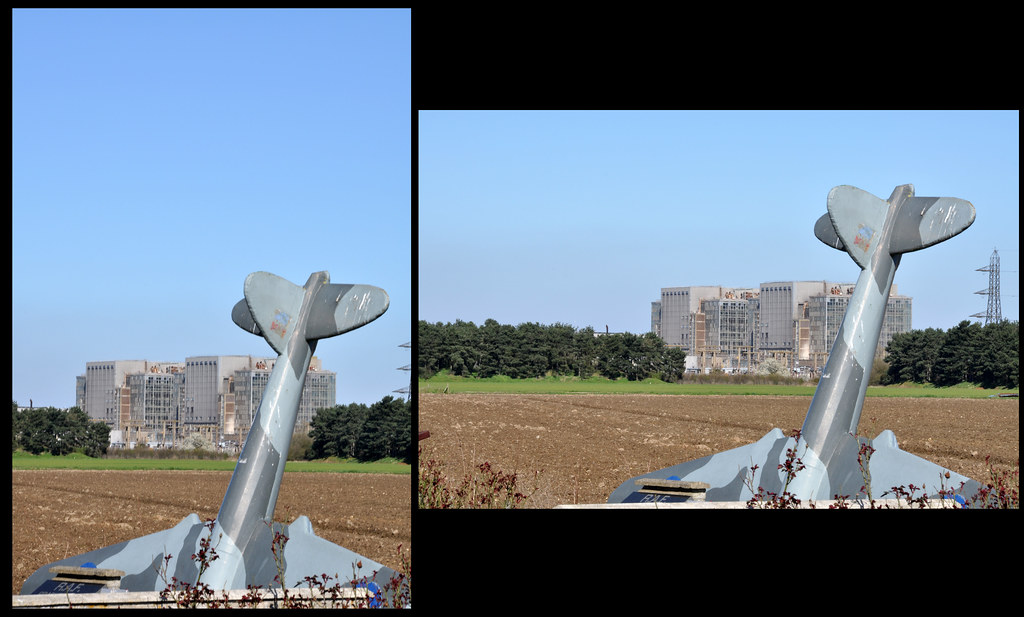

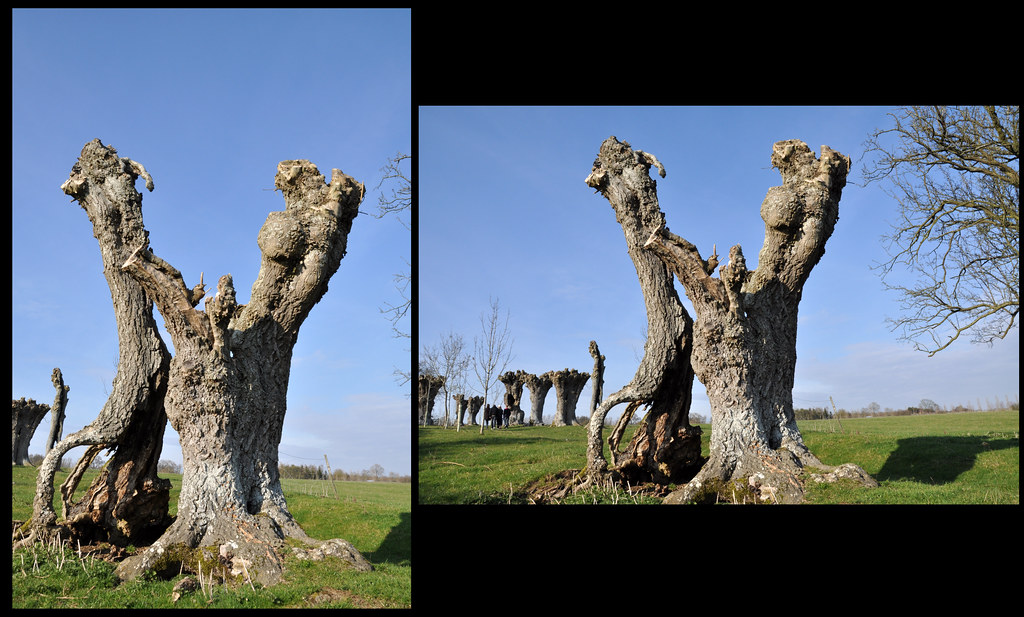

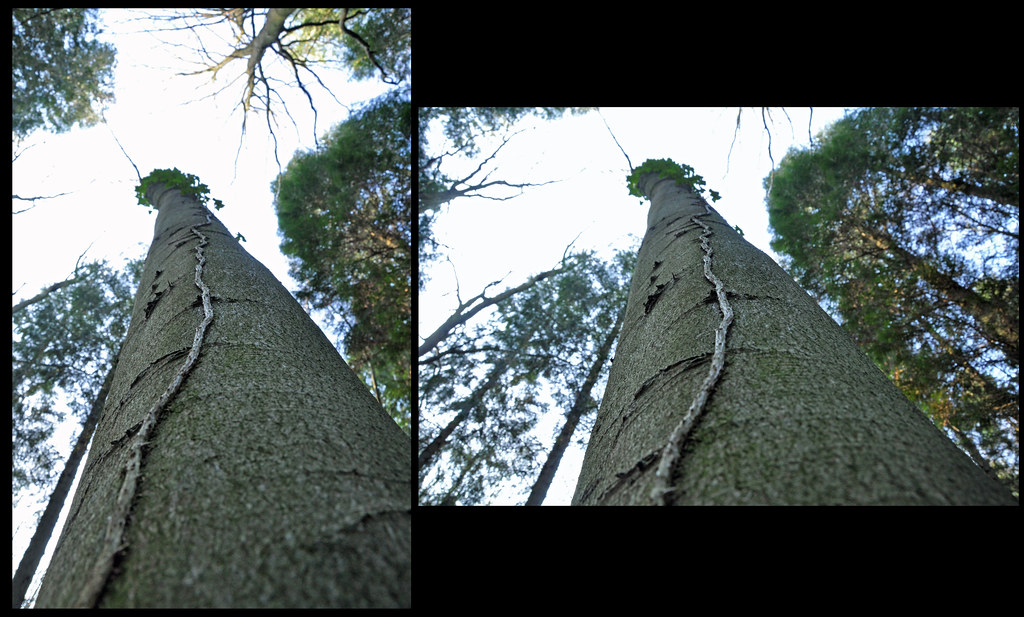
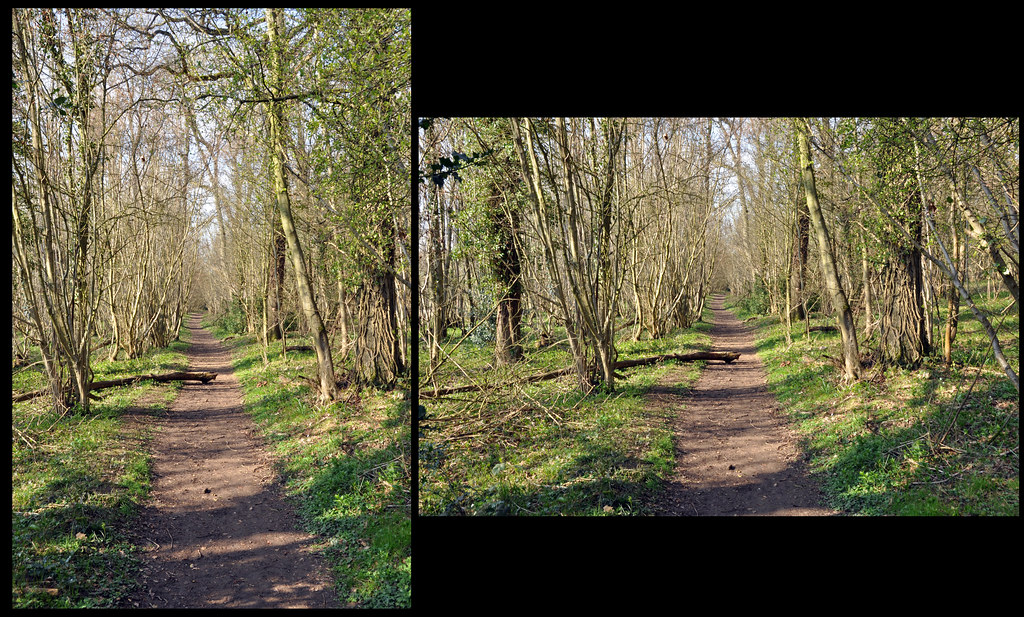

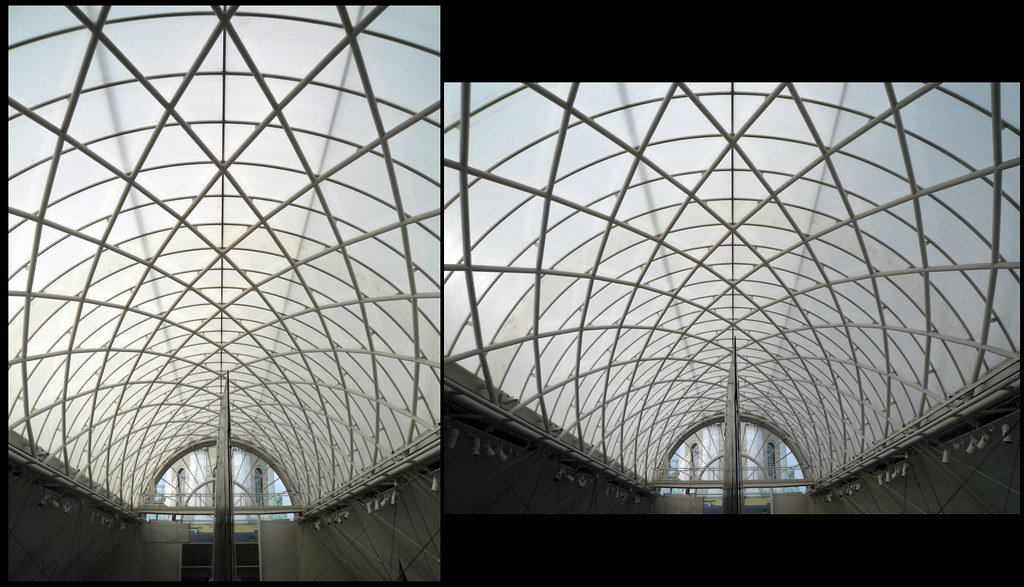
No comments:
Post a Comment